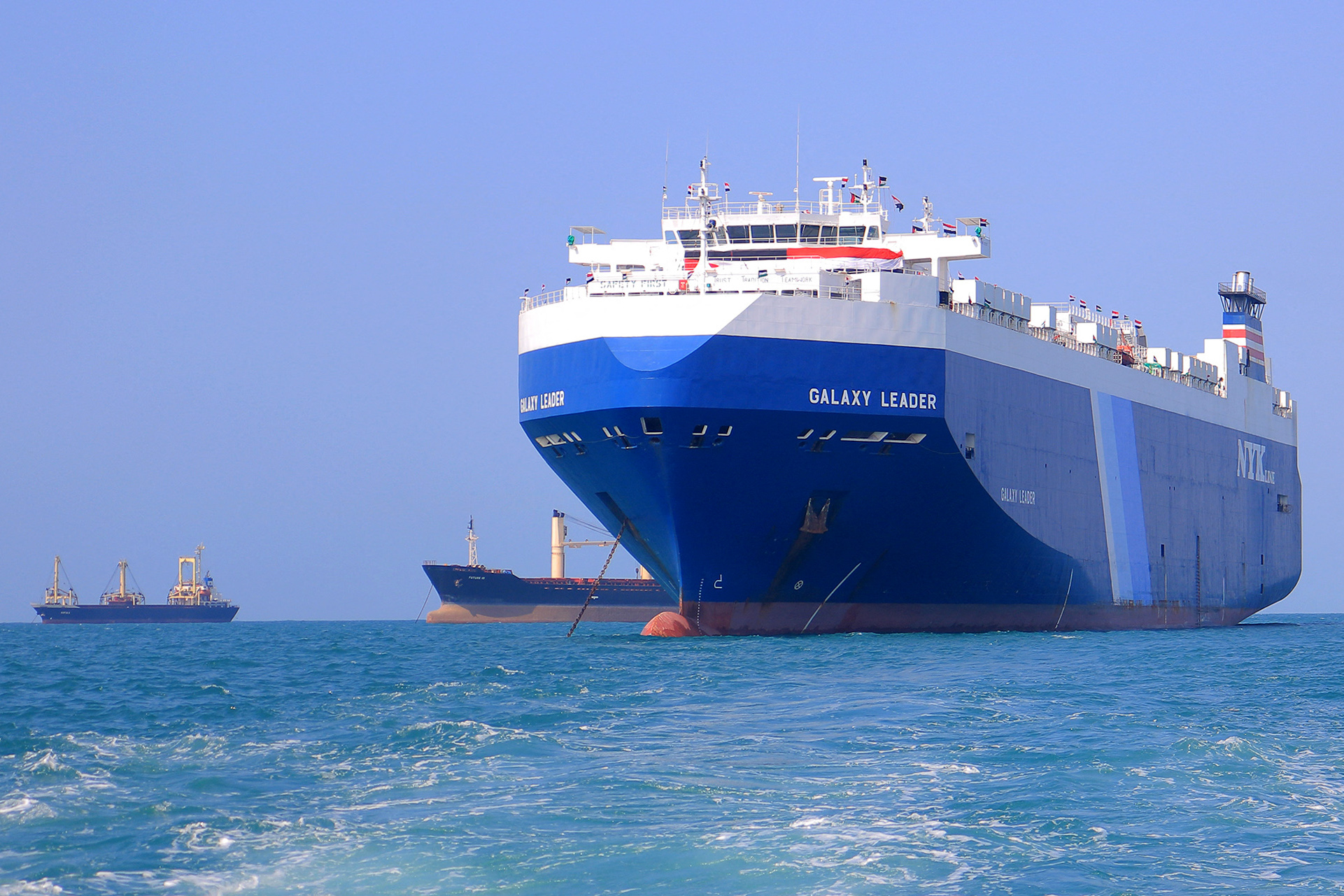To understand the implications for international shipping of the Yemen-based Houthi militant attacks in the Red Sea, it may be useful to start thousands of kilometers away, in the Port of Singapore. One of the busiest container shipping ports in the world, Singapore is a regular stop for all of the world’s leading shipping companies, and a key hub for Asia-Europe trade.
Now, let’s imagine a major container ship sailing the 17,000 kilometers from Singapore to Rotterdam. After exiting the port, it heads for its first major choke point, the Malacca Strait. Once through that vital waterway, it finds open seas, traversing the Indian Ocean and the Arabian Sea. As it approaches the coast of Yemen, it faces the Bab Al Mandeb Strait, another key chokepoint, before it enters the Red Sea onward to the Suez Canal.
If everything goes according to plan – and it usually does – the container ship passes through the Suez and will find itself sailing the Mediterranean headed for the Gibraltar Strait, another key choke point, between Morocco and Spain. Then, it will be on an Atlantic Ocean run north to the key Dutch port that is a major hub of northern Europe.
Everything is timed, synchronized, planned, and mapped for smooth sailings. After all, the global economy – and the bottom line of the shipping company – depends on it. Roughly 80-90 percent of world trade by volume is shipped by sea, according to the UN.
So, when something goes wrong in any part of that journey, it’s not just individual ships or shipping companies that feel the pain. We all do.
The recent attacks by the Houthi militants on international shipping in the Red Sea has scrambled supply chains, pushed up oil and natural gas prices, and raised geopolitical tensions far beyond the states surrounding the Red Sea. Some of the world’s largest shipping companies – MSC, Maersk, CMA CGM Group, and Hapag-Lloyd – have suspended their sailings in the Red Sea. Energy giant BP has also declared it will avoid the Red Sea until further notice.
The implications for world trade are serious. Roughly 15 percent of global trade and 30 percent of container traffic passes through the Suez Canal. The Red Sea and the Suez Canal are vital links in the global economy, playing a pivotal role in the global supply chain of oil, natural gas, food, manufactured products and more. Some 40 percent of Asia-Europe trade passes through the Suez Canal, including vital liquid natural gas supplies. In 2021, when a ship became lodged across the canal, blocking it completely, economists estimated that some $10 billion of trade was affected for each day the waterway was blocked.
The US military has announced an international coalition to protect Red Sea shipping lanes and provide security for the some 400 ships that are traversing the Red Sea at any given time. The US plan has not entirely soothed insurers, who have raised prices on Red Sea passages and expanded the areas considered high-risk. Prospects of US strikes against the Houthi militants, which are backed by Iran, have been raised. Oil prices are inching upward after several weeks of decline.
The Houthis, which control parts of north and west Yemen, have declared their attacks are in response to Israel’s war in Gaza and that they are targeting ships linked to Israel or using Israeli ports. Most of America’s regional allies have been cautious about joining the coalition. Across the Arab world, even in capitals where the Houthis are seen as a serious threat to regional stability, aligning with the US at a time of rising public anger over the Israel-Gaza war has made several countries uncomfortable. As a result, the US may be required to lead this operation without a large Middle East contingent to its coalition.
Meanwhile, the role of China will also be closely watched. Chinese shippers regularly traverse the Red Sea. China is also the only major purchaser of Iranian crude oil, giving it a degree of leverage over Tehran. Iran’s links with Houthi militants are clear, but it remains to be seen if Beijing will seek to exert pressure on Tehran to rein in the Houthi attacks – or, at least, to keep them targeted at non-Chinese vessels.
Egypt, too, should be watched. The country faces an economic quandary. The Suez Canal Authority reported a record $9.4 billion generated in the 2022-2023 financial year. A serious dent in those revenues would further squeeze an Egyptian economy that is already reeling from a foreign exchange crunch and soaring inflation. Concerns mount that Egypt could default on its roughly $165 billion of foreign debt, one of the highest levels in emerging markets.
Meanwhile, some 100 container ships are actively avoiding the Red Sea route, according to logistics giant Kuehne+Nagel, and many more are likely to follow. The Singapore-Rotterdam route will now sail all the way around the coast of southern Africa and back up toward the Atlantic Ocean and Europe, adding weeks and rising costs to the journey.
At a time of precarious recovery in the global economy and razor sharp geopolitical tensions, the Red Sea attacks are a reminder of how connected we are – and how dangerous it can be when those vital connections are severed.
Afshin Molavi is a senior fellow at the Foreign Policy Institute of the Johns Hopkins School of Advanced International Studies and editor and founder of the Emerging World newsletter. Twitter: @AfshinMolavi

